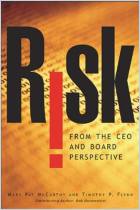Melden Sie sich bei getAbstract an, um die Zusammenfassung zu erhalten.

Melden Sie sich bei getAbstract an, um die Zusammenfassung zu erhalten.
Christopher L. Culp
The Art of Risk Management
Alternative Risk Transfer, Capital Structure and the Convergence of the Insurance and Capital Markets
Wiley, 2002
Was ist drin?
Initials aren’t the only reason that alternative risk transfer products are called ART. The real art resides in knowing how to use them to manage risk and make money.
Recommendation
Finance professional and professor Christopher L. Culp tells all, that is, all about alternate risk transfer (ART) products. Culp discusses corporate finance in detail, covering different types of capital. He sets out the risk control and capital structure functions of various classical and alternative risk transfer steps, such as derivatives targeted at market and credit risk, asset divestiture, insurance and reinsurance. Don’t even go here if you aren’t already familiar with (or studying) the sophisticated basics of finance, since this is highly technical reading, including numerous formulas, charts and graphs describing financial theories and processes. But if you are an expert, getAbstract.com congratulates you on finding your way to Culp, who aimed his book at the already-savvy: corporate treasurers, financial officers and those who participate in capital markets and the reinsurance industry.
Summary
About the Author
Christopher L. Culp Managing Director at CP Risk Management LLC in Chicago, is an Adjunct Associate Professor of Finance at the University of Chicago. A former President of Risk Management Counseling Services, Inc., and senior examiner in the Supervision and Regulation Department of the Federal Reserve Bank of Chicago, Dr. Culp is a managing editor of Derivatives Quarterly and Senior Fellow in Financial Regulation with the Competitive Enterprise Institute in Washington, D.C. He holds a Ph.D. in finance from the Graduate School of Business of the University of Chicago and a B.A. in economics from John Hopkins University.





















Comment on this summary